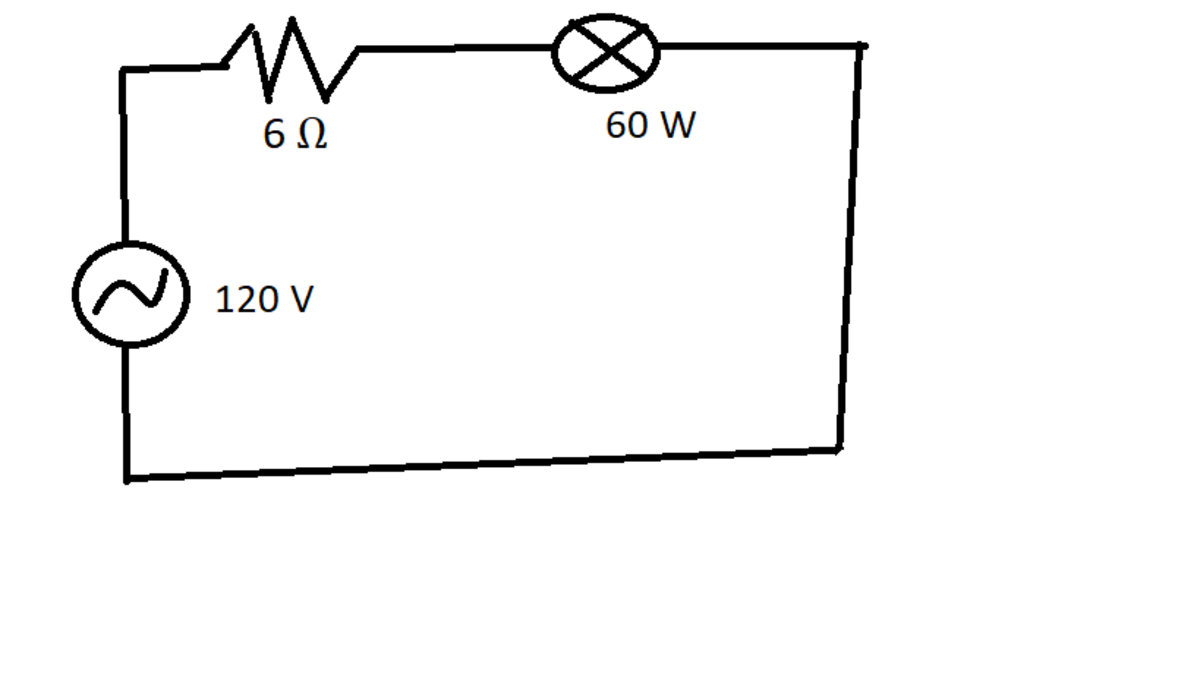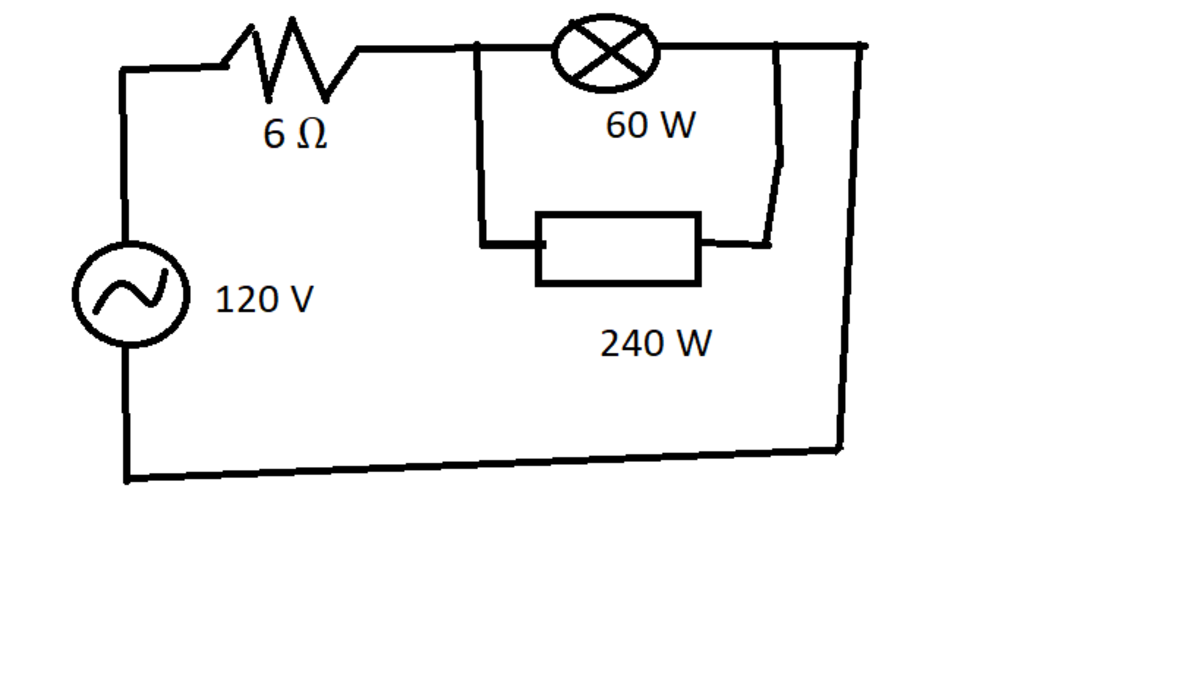Electrical devices in parallel
The supply voltage to a room is . The resistance of the lead wires is . A \(\SI {60} {\watt}\) bulb is already switched on. What is the decrease of voltage across the bulb, when a heater is switched on in parallel to the bulb? if ur answer is V, give [V], [.] represents the greatest integer function.
Note: The combined resistance of the lead wires is (since there are two of them).
Here supply voltage is taken as rated voltage.
The answer is 10.
This section requires Javascript.
You are seeing this because something didn't load right. We suggest you, (a) try
refreshing the page, (b) enabling javascript if it is disabled on your browser and,
finally, (c)
loading the
non-javascript version of this page
. We're sorry about the hassle.


Resistance of bulb = 120 120 240 60
× = Ω Resistance of Heater = 120 120 60 240
× = ΩVoltage across bulb before heater is switched on, 1 120 V 240 246
= × Voltage across bulb after heater is switched on, 2
120 V 48
54 = ×
Decrease in the voltage is V1 − V2 = 10.04 (approximately) Note: Here supply voltage is taken as rated voltage.